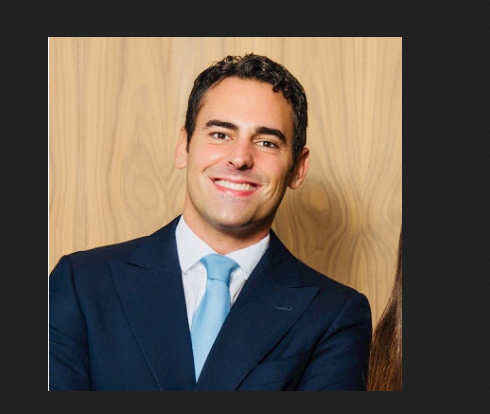The “Roaring Twenties” lived up to the hype in the first half of 2021 as most major indexes –S&P 500, FTSE 100 or Shanghai Composite- posted double-digit returns. Looking into the second half of the year, strategists of Natixis Investments Managers believe that along with rising returns, investors should especially watch two things: inflation and valuations.
These are the conclusions of a mid-year survey of 42 portfolio managers, strategists and economists representing Natixis IM, 16 of its affiliated asset managers, and Natixis Corporate and Investment Banking. It shows that even as the market considers the first real dose of inflation in 13 years, complacency may actually be the biggest risk facing investors.
More than a year into the pandemic, with light at the end of the tunnel, Natixis experts believe that long-term consequences of the last year will be slow to unfold. Still, the year-end outlook remains constructive with few risks on the horizon, suggesting investors best keep their eyes wide open as the long-term effects slowly begin to unfold.
“The Wall of Worry continues to keep sentiment in check. We hear many concerns about peak growth, and we remind investors not to confuse peak growth and peak momentum. We expect the pace of the recovery to ease, but ease to levels that are still very supportive for corporate earnings,” says Jack Janasiewicz, Portfolio Manager & Portfolio Strategist for Natixis Investment Managers Solutions.
Despite big returns from investment markets, the global economy has not yet fully reopened. More than half (57%) of strategists project it will take another six to nine months for the world to fully reopen. Others are similarly split between whether the economy is gearing up for the reopening towards the end of 2021 (21%) or whether it will be delayed until the second half of 2022 (19%).
Strong growth in the US
Regionally, sentiment runs most positive for the US economy. After watching it reopen sooner and faster than expected, with Q2 growth set to be 11% (annualized), two-thirds say they expect it to neither stall nor overheat in the second half, suggesting still strong growth ahead.
Looking at China, where economic growth has recovered to pre-pandemic levels, six in ten say the recovery has already peaked. Less than one-third (31%) think there’s more room for the Chinese economy to run in the second half of the year.
In Europe, where vaccination efforts are a few months behind the US and reopening is set to accelerate during the second half, 57% believe the economy will continue to lag the US, though 43% do believe it will catch up to the rest of the world through the end of the year.
Is complacency the real risk?
In this context, no single risk stood out for Natixis strategists in this annual survey, with no risk factor rated above an average of 7 on a scale of 10. Taken together, the views suggest that investors should monitor risks and investors be on the watch for potential headwinds.

“Indications are that inflation will prove transitory, driven by consumers fresh out of lockdown and flush with cash, coupled with supply chain bottlenecks. But the risks are clearly to the upside. Even the Fed had to acknowledge that inflation would run hot in 2021, though it is confident it will not spiral beyond that,” said Lynda Schweitzer, Co-Team Leader of Global Fixed Income at Loomis Sayles.
Value continues to lead in equities
One of the key market trends to come out of the pandemic has been the rotation to value investing. Looking into the second half of the year, 64% of those surveyed say value has at least a few more months to run, though only a quarter (26%) believe that outperformance could last for a few years. Only 10% believe the value run is already over, a sentiment that was strongest among the 21% of respondents who see markets stalling in the last two quarters of 2021.
Chris Wallis, Chief Investment Officer at Vaughan Nelson Investment Management points out that for value to continue to outperform, “we will need inflation to prove transitory and further fiscal spending by the federal government”.
It all comes down to the Fed
Of all factors that could impact market performance over the second half of 2021, strategists say that Fed moves matter most, rating them 7.2 out of 10. Similarly, they cite economic data releases (6.7), fiscal spending (6.1) and liquidity (6) as key leading market drivers, demonstrating just how much sway central banks continue to hold over markets. Valuations (5.2), vaccinations (5.1) and geopolitics (5) round out the pack, showing that respondents are looking past the pandemic and that, while valuations are high, they often do not lead to a correction on their own.
The outlook for emerging markets in the second half of the year is also dependent on the Fed, according to the survey. Indeed, 45% of respondents caveat their call for EM outperformance with the dollar and yields remaining contained, showing how far-reaching the Fed’s impact is. Only 10% of respondents gave an outright “yes” to EM outperforming into the end of the year, while 14% say EM needs Chinese growth to remain robust and nearly one in three (31%) said “no,” emerging markets will not outperform during the second half of 2021, regardless of any caveats.
ESG and crypto positioning
In considering two of the leading investment stories to come out of the pandemic, Natixis strategists have the strongest convictions about ESG (Environmental, Social, and Governance) investing. Throughout the pandemic, ESG strategies generated impressive results in terms of both returns and asset growth. Few think the success will be short-lived, as one in ten of those surveyed think of ESG as a fad. Instead, 48% say these investments are becoming mainstream and 26% call them a must-have investment.
When it comes to cryptocurrencies, the asset manager believes that while they have been grabbing headlines over the past year, two-thirds of those surveyed believe the market under-appreciates the risks, 17% say crypto is nothing more than a fad and 12% believe it is a disaster waiting to happen. “Not one of the 42 strategists surveyed believes cryptocurrencies are a bona fide alternative to traditional currencies”, the analysis adds.
Post-pandemic winners remain the same
As we start to look post-pandemic, respondents saw little change in the projected post-pandemic winners compared to last year’s survey. This year, strategists call for technology (88%), healthcare (83%), ESG investing (76%), and housing (74%) to be the winners from the crisis.
Given that nearly six in ten strategists (57%) put stay-at-home business in the winners’ column, it appears many think it will take time for the sector to mirror the return to the office. Convictions do not run as strong for energy (38% winner / 62% loser) and travel (52% winner, 48% loser), an outlook that aligns with a full reopening sometime in the first half of 2022 rather than the last half of 2021.




 For Alicia Miguel Serrano
For Alicia Miguel Serrano